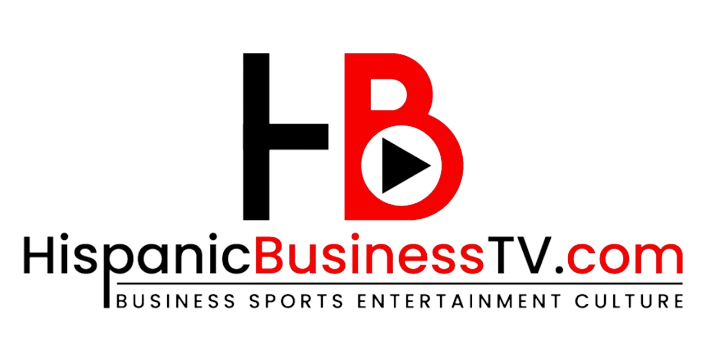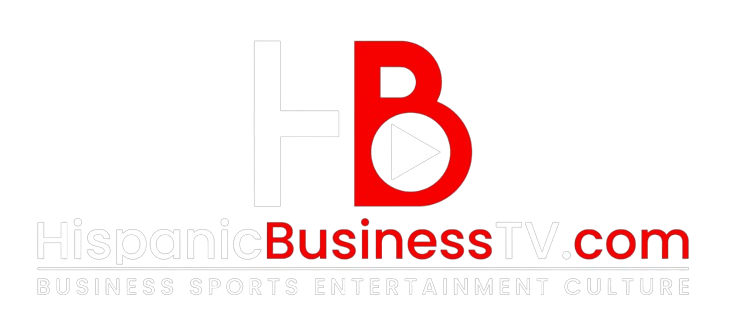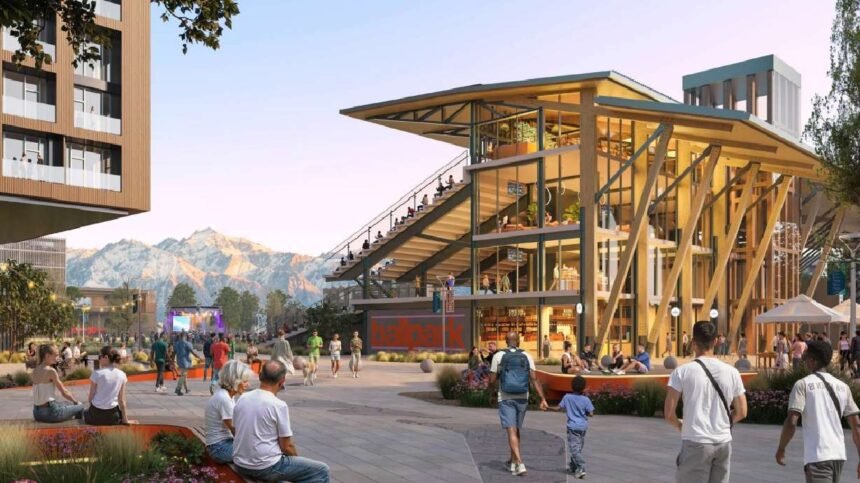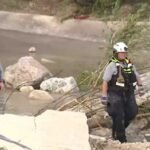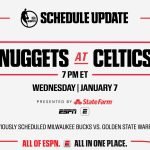SALT LAKE CITY — A plan to transform Smith’s Ballpark into something new has Utah’s capital city swinging for the fences.
A piece of the old ballpark will remain, serving as a community venue space adjacent to a portion of the field that will be converted into a multi-use area. The rest of the 31-year-old stadium and its parking lot to the north will be demolished to make way for a mix of housing, business space, parking and community needs, according to the Ballpark Next Community Design Plan that the Salt Lake City Community Reinvestment Agency made public on Tuesday.
A community meeting about the design is planned for next week, but the first processes to turn the vision into a reality could begin by the end of the year. Partial demolition could be a year or two away, Salt Lake City Mayor Erin Mendenhall said Tuesday, standing in the concourse at the old Salt Lake Bees ballpark. The entire plan will be implemented in phases.
“This has been an intensively community-focused process, and (the community has) shown up time and again to tell us what they want and what they need in this community,” Mendenhall said. “And I believe this proposal reflects those demands and needs from the community.”
A new Ballpark use
The Ballpark Next Community Design Plan is essentially a “blueprint” for what the Salt Lake City Community Reinvestment Agency wants to do with the nearly 15 acres tied to Smith’s Ballpark moving forward, Lauren Parisi, a senior project manager for the Reinvestment Agency, explained. Exact details may change as the plan is implemented, but the document outlines a few key objectives.
“We feel confident about the elements that are being proposed, but that said — as we move forward — there might be some things that could shift, so it’s really intended to serve as a guide,” she told KSL.com.
The types of developments could change based on what kinds of developments emerge in a public-private partnership. The city wants to “prioritize” home ownership and affordable opportunities within new housing developments, she added.
Salt Lake City’s quest to determine what to do with Smith’s Ballpark began in early 2023, when the Larry H. Miller Company announced it would relocate the Bees to a new stadium it was constructing in South Jordan’s Daybreak community. The city launched a contest to drum up ideas, but ultimately partnered with the global design firm Perkins&Will to map out the area.
The city also reached a deal with the University of Utah, whose baseball team used the stadium this season. The Utes played what could be the last organized baseball game on the corner of 1300 South and West Temple back in May.
Mendenhall announced that the ballpark would be “repurposed” earlier this year, following decisive feedback from neighborhood residents when the city offered three options for the property. A complete demolition or total preservation of the stadium was also considered.
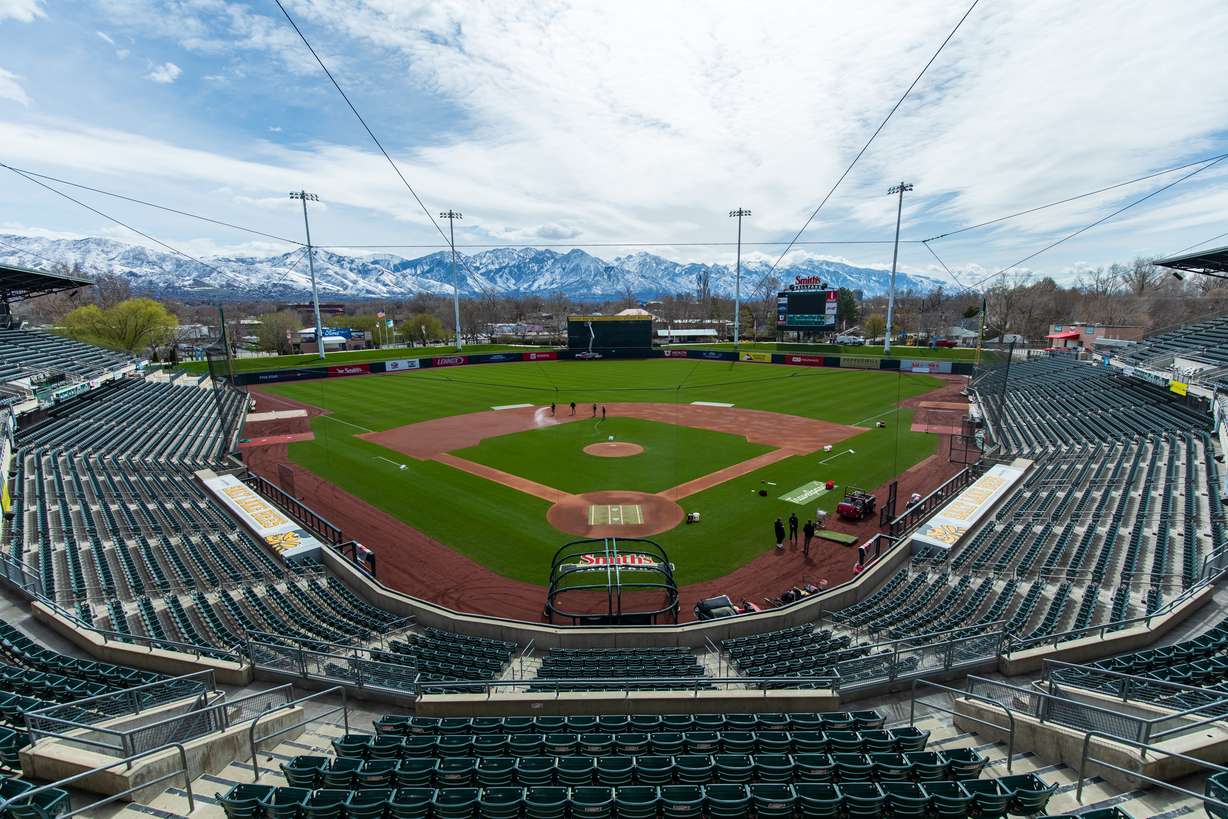
Tuesday’s announcement marks the biggest update since then.
“This is a big milestone (and) a big step,” said Salt Lake City Councilman Darin Mano, who also serves as chairman of the Reinvestment Agency and whose district includes the Ballpark neighborhood.
Mano said he knows that not everyone will be happy with the plan, but he believes it captures many of the things the neighborhood has called for, including more green space, a library and housing opportunities.
The project will likely reshape the neighborhood for “generations to come,” said Amy Hawkins, chairwoman of the Ballpark Community Council.
Several “really good community ideas” emerged from the plan, which is a plus, she said as she reviewed the document. She added that green space and a permanent library were key neighborhood issues, but she’s also concerned that too much of the land could be sold off for redevelopment instead of providing open spaces in a neighborhood that doesn’t have much of it.
“We’ve been having a conversation about that nationally — the value of public land and why we don’t necessarily think it’s appropriate to sell off public lands to create housing opportunities,” she told KSL.com, referring to an abandoned proposal by Sen. Mike Lee. “Should we also think about that within the city as well as other forms of public land?”
The next steps
There are still many steps until the vision becomes a reality. The recommendation is scheduled to be presented to the Salt Lake City Community Reinvestment Agency board of trustees next week. There will also be a community open house at the ballpark beginning at 6 p.m. on Thursday, July 10.
The first redevelopment steps are expected to begin when the Reinvestment Agency issues a request for proposals from developers on the site’s northwest corner, which is scheduled to occur by the end of this year. Mendenhall said the city is looking for developers who will incorporate community feedback into their designs.
Key aspects of the Ballpark Next Community Design Plan
- Bleachers stay: The first-base side bleachers at the south end of the Smith’s Ballpark parcel would remain, as that portion of the stadium still has “good bones” structurally. It would provide about 3,700 seats next to a 240-by-165-foot multi-use field. The whole space could hold up to about 9,200 people for festivals, concerts or other events, while also offering residents a park space when there aren’t events.
- Housing: Other parts of the stadium and its parking lot would be demolished, leaving a mixture of housing types to be considered. The plan calls for about 460 multi-family and senior housing units, which would be rented apartments or condominiums for sale.
- Economy and parking: A 125-room hotel and 75,000 square feet in new retail space are also being considered. Shared parking garages would also be blended into the spaces, adding nearly 1,000 stalls.
- Civic buildings: A new fire station and library are planned for the “civic edge” closer to Main Street and 1300 South.
- Connection: A new walkway network between the buildings and fields to improve connectivity.
- Open space: A section of the three creeks that run underneath the stadium parking lot would also be “daylighted,” bringing them back as a linear park at the north end of the project area.
- Entertainment: A “festival street” along West Temple would allow for street events in the neighborhood.
At the same time, the city will also plan out development details for the portion of the ballpark that will remain. Exact timelines are fuzzy until next spring, but Reinvestment Agency officials say they’re hopeful to break ground on projects as early as mid to late 2026 or early 2027.
Salt Lake City has already received big donations, including $22 million from the Larry H. and Gail Miller Family Foundation last year.
However, the city is also tracking issues beyond its control. Several development projects across the nation, including in Salt Lake City, have slowed down amid high project costs and interest rates, which could impact the timeline. Parisi is optimistic that the plan’s “momentum” will help attract development, but Mano said it is a legitimate concern.
“Salt Lake City is still growing and there is still desire to build here … (so) I’m hopeful we can overcome some of those development snags,” he said. “I’m hoping that we can use this time to really build something world-class, and something that the private market wouldn’t produce on its own.”
The Key Takeaways for this article were generated with the assistance of large language models and reviewed by our editorial team. The article, itself, is solely human-written.

